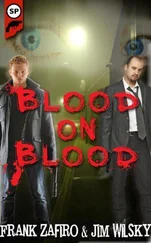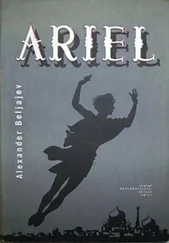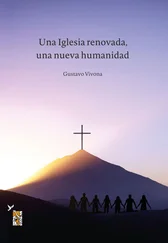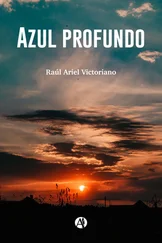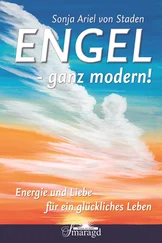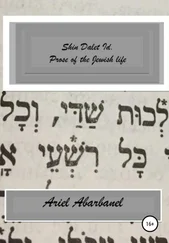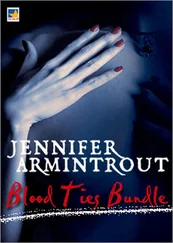Ariel Toaff - Blood Passover
Здесь есть возможность читать онлайн «Ariel Toaff - Blood Passover» весь текст электронной книги совершенно бесплатно (целиком полную версию без сокращений). В некоторых случаях можно слушать аудио, скачать через торрент в формате fb2 и присутствует краткое содержание. Жанр: Религиоведение, на английском языке. Описание произведения, (предисловие) а так же отзывы посетителей доступны на портале библиотеки ЛибКат.
- Название:Blood Passover
- Автор:
- Жанр:
- Год:неизвестен
- ISBN:нет данных
- Рейтинг книги:3 / 5. Голосов: 1
-
Избранное:Добавить в избранное
- Отзывы:
-
Ваша оценка:
- 60
- 1
- 2
- 3
- 4
- 5
Blood Passover: краткое содержание, описание и аннотация
Предлагаем к чтению аннотацию, описание, краткое содержание или предисловие (зависит от того, что написал сам автор книги «Blood Passover»). Если вы не нашли необходимую информацию о книге — напишите в комментариях, мы постараемся отыскать её.
Blood Passover — читать онлайн бесплатно полную книгу (весь текст) целиком
Ниже представлен текст книги, разбитый по страницам. Система сохранения места последней прочитанной страницы, позволяет с удобством читать онлайн бесплатно книгу «Blood Passover», без необходимости каждый раз заново искать на чём Вы остановились. Поставьте закладку, и сможете в любой момент перейти на страницу, на которой закончили чтение.
Интервал:
Закладка:
154
On the figure of Abbadi Mosè del Medigo and his family see, in particular, Carpi, L’individuo e la collettività , cit., pp. 230-233.
155
Capsali, Seder Eliyahu Zuta , cit., vol. II, p. 253.
156
ASV, Avogaria di Comun, reg. 3660, cc. 107r-108r.: the trial of Abramo di David da Soncino, the client, and Bonaventura di Abramo da Feltre, the accomplice, guilty of the murder of "Elia greco", son of Abba del Medigo, "prestatore a Soave", was held at Venice at the beginning of the month of December of 1505. It appears that in 1056, Abba's widow, Ritte, was occupied in matters related to the estate of the deceased son (cfr. Carpi, L’individuo e la collettività , cit. p. 232). The murder of Elia the Greek (but not the identification of Elia the Greek with Elia, son of Abba del Medigo) is mentioned in M. Melchiorre, Gli ebrei a Feltre nel Quattrocento. Una storia rimossa , in G.M. Varanni and R.C. Mueller, Ebrei nella Terraferma veneta del Quattrocento , Florence, 2005, p. 101, no. 73.
157
Cfr. Jacoby, Les juifs at Venice , cit., p. 172.
158
Cfr. Gardenal, Ludovico Foscarini e la medicina , cit., pp. 251-263. On the position of the Jewish physician in Renaissance Italy and the frequent disputes in his regard, see, among others, A. Toaff, Il vino et la carne. Una communita ebraica nel Medievo , Bologna, 1989, pp. 265-285; G. Cosmacini, Medicina e mondo ebraico. Dalla Bibbia al secolo dei ghetti , Bari, ,2001, pp. 143-211.
159
See, in this regard, M.J.C. Lowry, Humanism and Anti-Semitism in Renaissance Venice. The Strange Story of "Décor Puellarum ", in "La Bibliofilia", LXXXVII (1985), pp. 39-54. in view of the fact Foscarini had been incarcerated in the two-year period of 1460-1461, the city business permits granted by Venice to the Jewish doctors (and first of all to Yehudah messer Leon) should have been signed in that period. Notwithstanding Foscarini's protest, on the request of the Doge Cristoforo Moro, the Cardinal Bessarione, Papal legate, dated 17 December 1463, confirmed that these agreements were respected.
160
Cfr. Gardenal Ludovico Foscarini e la medicina , cit., p. 260. "Nuperrime quidam Iudeus togatus, auro circumdatus, demissis capillis, severa facie ausus est nobillissiumis matronis in generosa familia lacrimantibus oculis dicere: compatior ignorantiae vestae quia creditis Deum factorem coeli et terrae ses manducandum preabere et non dedignari lenonum impurissimorum et vulgatissimarum meretricium ora."
161
Cfr. M.A. Shulvass, Racconto delle tribolazioni passate in Italia , in "Hebrew Union College Annual", XXII (1949), pp. 1-21 (17) (in Hebrew). The anonymous chronicle has been republished by I. Sonne, Da Paolo IV a Pio V , Jerusalem, 1954, pp. 183-202 (pp. 200-201) (in Hebrew).
162
Fra Francesco Suriano, writing before 1483, noted with ill-concealed pride that the Jewish women of Venice, when they gave birth, often did not hesitate to ask the Virgin Mary for help, in a paradoxical, self-interested cult with magical connotations (F. Suriano, Il trattato di Terra Santa e dell'Oriente , by G. Golubuvich, 1900, p. 94-95): "Li Iudei similiter sono constrecti de reverirla (la Vergine Maria); e secundo che ho udito da obstretricie digne di fede, ne l'alma cita de Venetia e christiane che se sono retrovate alquante volte arcoglier loro fioli nel parto de piu Hebree, le qual testificavono e dicevono che non partuire senza la sua invocazione e recommendazione; et vede che loro mariti spargeano per la camara alquante monede d'argento furlane, le qual hano la sua ymagine. Ricevuta la gratia, e liberata dal parto, scopano e bugliano fori de la fenestra quelle monede, e diceano: "fora Maria, fora Maria! " [“Similarly, the Jews are compelled to revere Her (the Virgin Mary); and according to what I have heard from trustworthy midwives who went to assist several Jewesses in childbirth in the Christian city of Venice, they testified and said that the Jewesses never give birth without Her invocation and recommendation; their husbands toss a few Friulian silver coins around the room, bearing Her image. When they have received Her blessing and are freed from childbirth, they sweep them up and throw them out the window, saying ‘Get out, Mary, Mary get out!’”]. The quotation appears in D. Nissim, Due viaggi in Palestina , in "La Rassegna Mensile di Israel", XL (1974), pp. 256-259 (259). However one wishes to take Franciscan's picturesque account, it seems to be a fact that, towards the end of the Fifteenth century, Jewish women giving birth in Venice were very numerous. It should be noted, without surprise, that such a practice was still widespread among Jewish women two centuries later, as testified to by Giulio Morosini (Derekh Emunah. Via delle fede mostrata agli ebrei , Rome Propaganda Fiede, 1683, pp. 1050-1051).
163
Cfr. D. Nissim, Un"minian" di ebrei ashkenaziti a Venezia negli anni 1465-1480 , in "Italia", XVI (2004), p. 43.
164
The little information on the origins of the Jewish community in Trent, from the episcopal privilege of 1403 to the money lending agreements and legal disputes of the mid-Fifteen Century, are contained in G. Menestrina, Gli ebrei a Trento , in "Tridentum", VI (1903), pp. 304-316, 348-374, 384-411. This information has been utilized, without addition, by the following authors: C. Andreolli, Una ricognizione delle communita ebraiche nel Trentinto tra XIV e XVII secolo , in "Materiali di lavoro", 1988, nn. 1-4, pp. 151-181; Po-Chia Hsia, Trent 1475 , cit., pp. 14-25, as well as D. Rando's recent monograph, Dai margini la memoria. Johannes Hinderbach (1418-1486), Bologna, 2003, pp. 457-491, and S. Luzzi, Stranieri in citta. Presenza tedesca e societa urbana a Trento (secoli XV-XVIII), Bologna, 2003, pp. 180-194. In this regard, see also F. Ghetta, Fra Bernardino Tomitano da Feltre e gli ebrei di Trento nel 1475 , in "Civis", suppl. 2 (1986), pp. 129-177.
165
Mosè di Samuele da Trento and the wife of Dolce di Ezzelino (Anshel Asher) had five children, Samuele, Ezechia, Benedetto known as Barukh, Perentina and Osella (Feige). Moise's testament was ratified at Trent on 10 June 1423 (cfr. M. Davide, Il ruolo economico delle donne nelle communità ebraiche di Trieste e di Treviso nei secoli XIV e XV , in "Zhakhor. Rivista di storia degli ebrei d'Italia", VII, 2004, pp. 193-212 [206-208].
166
Cfr. Menestrina, Ebrei a Trento , cit., pp. 304-306.
167
Cfr. ibidem, pp. 307-308
168
Now Conegliano Veneto.
169
Angelo da Verona reached Trent in 1407. On that occasion, Hinderbach seized from the money lender, whom he called “hebreum qui venit huc (sc. a Trento), de Brixia sive eius territorio”, an illuminated manuscript of the Vitae sanctorum (cfr. “Pro Bibliotheca erigenda”. Mostra di manoscritti ed incunabili del vescovo di Trento Iohannes Hinderbach , 1465-1486, Trent, 1989, p. 69.
170
Cfr. Luzzi, Stranieri in città , pp. 180-185.
171
"Sarra ivit in canipam ipsius et se lavit in fossato ibi existente [...] quia passa fuerat menstrua Sarra diebus precedentibus, quia est de more Iudeorum quod mulieres Iudee post menstruase lavent." Deposition of Samuele of Nuremberg of 7 June 1475. Sarah was the wife of Maestro Tobias of Magdeburg (cfr. Esposito and Quaglioni, Processi, cit., vol. I, p. 244).
Читать дальшеИнтервал:
Закладка:
Похожие книги на «Blood Passover»
Представляем Вашему вниманию похожие книги на «Blood Passover» списком для выбора. Мы отобрали схожую по названию и смыслу литературу в надежде предоставить читателям больше вариантов отыскать новые, интересные, ещё непрочитанные произведения.
Обсуждение, отзывы о книге «Blood Passover» и просто собственные мнения читателей. Оставьте ваши комментарии, напишите, что Вы думаете о произведении, его смысле или главных героях. Укажите что конкретно понравилось, а что нет, и почему Вы так считаете.


